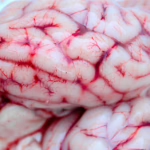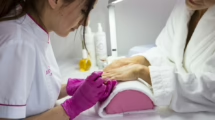Understanding the Human Reproductive System: Key Functions and Health Tips
Introduction
The human reproductive system plays a critical role in human biology, development, and the continuation of species. Understanding this system not only involves recognizing its anatomy and physiology but also grasping the interconnectedness of reproductive health with overall well-being. In this extensive article, we will delve into various aspects of both male and female reproductive systems, explore their key functions, and provide actionable health tips to maintain reproductive health.
Anatomy of the Male Reproductive System
1. External Structures
The male reproductive system consists of several key external structures:
- Penis: The organ responsible for sexual intercourse and the excretion of urine.
- Scrotum: A pouch of skin that contains the testicles; it regulates temperature, facilitating optimal sperm production.
2. Internal Structures
The internal components include:
- Testes: The organs that produce sperm and testosterone.
- Epididymis: A coiled tube where sperm mature and are stored.
- Vas deferens: A duct that transports sperm from the epididymis to the ejaculatory duct.
- Seminal vesicles: Glands that produce seminal fluid, which nourishes sperm.
- Prostate gland: Produces a fluid that protects and energizes sperm.
- Bulbourethral glands: Produce a pre-ejaculatory fluid for lubrication.
Key Functions of the Male Reproductive System
The male reproductive system serves several important functions:
- Sperm Production: The testes are responsible for the continuous production of sperm throughout a man’s life after puberty.
- Hormonal Regulation: Testosterone influences secondary sexual characteristics like muscle mass and body hair.
- Ejaculation: The process of expelling sperm from the male body during sexual activity.
Anatomy of the Female Reproductive System
1. External Structures
The female reproductive system includes the following key external parts:
- Vulva: The external female genitalia, including the labia, clitoris, and vaginal opening.
- Clitoris: A highly sensitive organ that plays a significant role in female sexual arousal.
2. Internal Structures
Internally, the components are:
- Ovaries: The organs that produce eggs (ova) and hormones like estrogen and progesterone.
- Fallopian tubes: Tubes that transport the ova from the ovaries to the uterus.
- Uterus: The muscular organ where a fertilized egg implants and develops into a fetus.
- Cervix: The lower part of the uterus that opens into the vagina.
- Vagina: The canal that connects the external genitals to the uterus, serving as the birth canal and a passage for menstrual fluid.
Key Functions of the Female Reproductive System
The essential functions of the female reproductive system include:
- Ovum Production: Women are born with a finite number of eggs, and ovulation occurs about once a month, beginning at puberty.
- Menstrual Cycle: Regulated by hormones, this cycle prepares the body for potential pregnancy each month.
- Pregnancy and Childbirth: The uterus provides a nurturing environment for a growing fetus.
Hormonal Regulation in Reproductive Health
Hormones play a vital role in both male and female reproductive systems. Here’s a brief overview:
Male Hormones
- Testosterone: The primary male sex hormone responsible for the development of male characteristics and reproductive functions.
- Follicle-Stimulating Hormone (FSH): Regulates the production of sperm.
- Luteinizing Hormone (LH): Stimulates testosterone production.
Female Hormones
- Estrogen: Responsible for the development of the female reproductive system and secondary sexual characteristics.
- Progesterone: Prepares the uterus for implantation of a fertilized egg and regulates the menstrual cycle.
- FSH and LH: Regulate the menstrual cycle and ovulation.
Common Reproductive Health Issues
Male Reproductive Health Issues
- Erectile Dysfunction: A condition characterized by the inability to achieve or maintain an erection. It can be linked to health conditions like diabetes and heart disease.
- Infertility: Factors may include low sperm count, poor sperm motility, or anatomical issues.
- Prostate Issues: Conditions like benign prostatic hyperplasia (BPH) or prostate cancer are common among older men.
Female Reproductive Health Issues
- Polycystic Ovary Syndrome (PCOS): A hormonal disorder causing irregular menstrual cycles and infertility.
- Endometriosis: A painful condition where tissue similar to uterine lining grows outside the uterus.
- Menstrual Disorders: Conditions affecting menstrual cycles, such as amenorrhea (absence of menstruation) or dysmenorrhea (painful periods).
Health Tips for Reproductive Health
Tips for Male Reproductive Health
- Regular Check-ups: Schedule routine visits to healthcare providers for screenings and assessments.
- Healthy Lifestyle Choices: Maintain a balanced diet, exercise regularly, and avoid smoking and excessive alcohol consumption.
- Manage Stress: Engage in stress-reducing activities like meditation and physical exercise.
- Stay Hydrated: Proper hydration is crucial for overall bodily function, including reproductive health.
- Limit Exposure to Toxins: Avoid environmental pollutants and chemicals that may affect fertility.
Tips for Female Reproductive Health
- Regular Gynecological Exams: Regular check-ups allow for early detection of potential health issues.
- Healthy Diet and Exercise: A balanced diet rich in fruits, vegetables, and whole grains can support hormone balance. Regular exercise improves circulation and overall health.
- Stress Management: Engaging in mindfulness practices can positively impact your reproductive health and overall well-being.
- Maintain Healthy Weight: Excess body weight can disrupt hormonal balance and affect menstrual cycles.
- Educate Yourself: Understanding your body and menstrual cycle can empower you to take charge of your reproductive health.
Conclusion
The human reproductive system is intricate and essential for various biological functions. Understanding its anatomy, physiology, and the impact of hormonal regulation on reproductive health is crucial for both men and women. By recognizing common health issues and adopting proactive health measures, individuals can lead healthier lives and mitigate potential reproductive health challenges. Awareness, education, and routine health practices are key to achieving and maintaining optimal reproductive health.
[Modern Footnote Source] For more detailed information on reproductive health, consult reliable sources such as the American College of Obstetricians and Gynecologists, Mayo Clinic, and World Health Organization guidelines. These organizations provide evidence-based information and support for individuals seeking to understand their reproductive health better.

























Add Comment